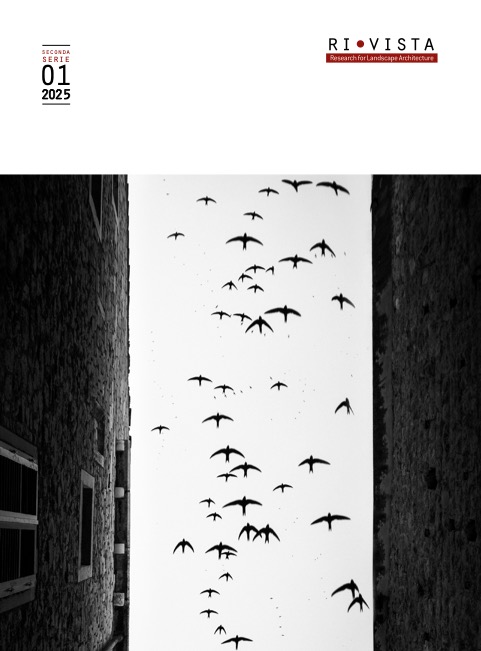Vol 23, No 1 (2025): Aperto. Per un ritratto dello spazio aperto / Open. For a portrait of open space
Issue Description
Open space, a living site of interaction between nature, memory, and society, is now a strategic resource for addressing ecological and urban challenges. Too often considered as empty or marginal, it reveals instead a structural, poetic, and transformative potential.
When we launched the call for this issue of Ri-Vista over a year ago, our aim was to “to collect images, experiences and reflections for a reading that acknowledges the freedom and diversity of every open space, both in its individuality and in its belonging to more complex systems”, in search of those somatic and ontological features that would outline a portrait of it. What emerged does not outline clear or univocal features. Nevertheless, this issue explores the deep value and design potential of open space through the lens of complexity.
Moving beyond disciplinary interpretations rooted in urban planning, architecture, or geography, it is only through a landscape perspective that open space reveals itself as an active skin between sky, land, and sea—a boundary of exchange and imagination.
Transcending technical and fragmented visions, landscape design has the capacity to restore meaning to the open, enhancing its ecological, aesthetic, and social dimensions.

